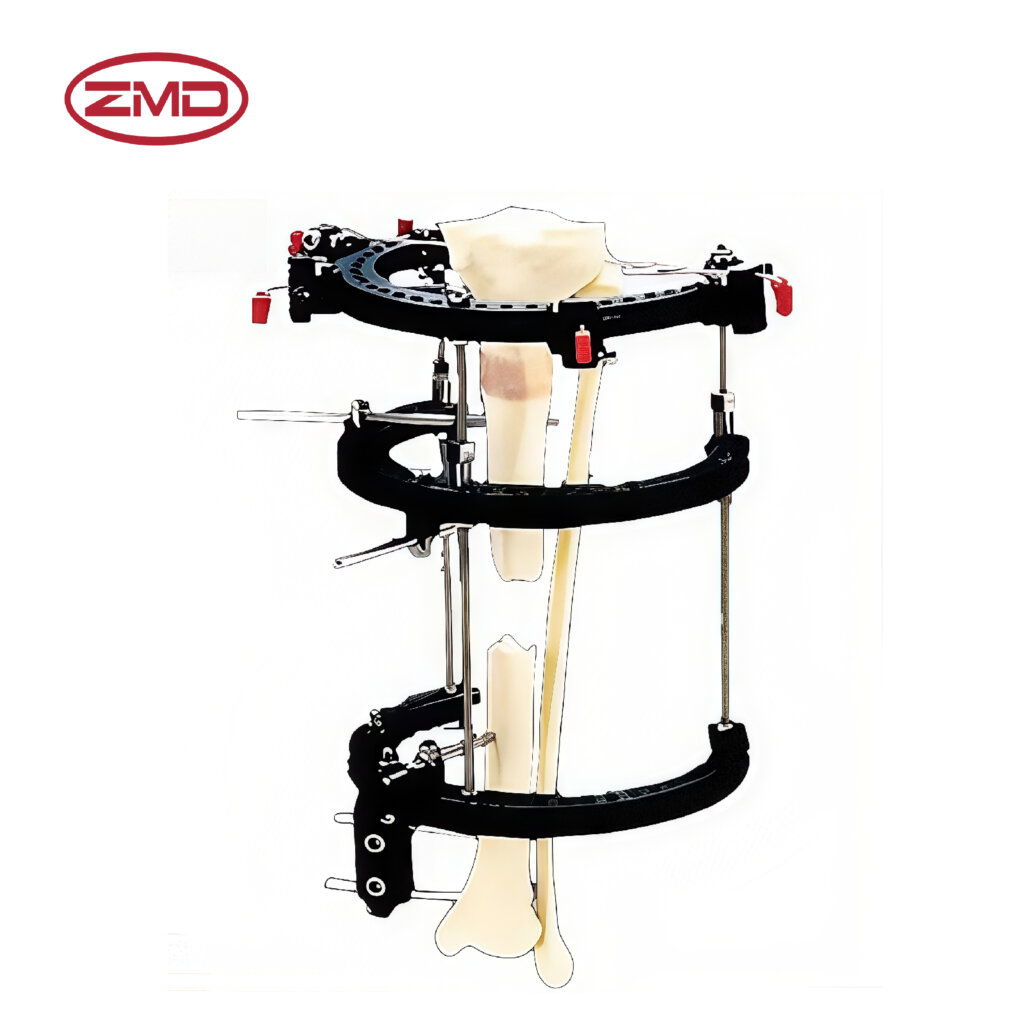
- Home
- About Us
- Products
- Trauma Internal Fixation System
- Spinal Internal Fixation System
- External Fixation
- Artificial Implants System
- Sports Medicine
- Power tools
- VSD System
- Instruments
- Medical supplies
- Blog
- Personnel Profile
- Contact Us
Phone line
| CODE | PRODUCTION | DESCRIPTION | MATERIAL |
| ZK001 | Mini Rail Fixator (Long) | Whole set | Aluminum |
| ZK002 | Mini Rail Fixator (Standard) | Whole set | Aluminum |
| ZK003 | Mini Rail Fixator (Short) | Whole set | Aluminum |
The fixator is typically made of high - quality metal alloys. These alloys are chosen for their durability, which allows the fixator to withstand the mechanical stresses during the bone - healing process and provide reliable support.
It is attached to the bone using screws or pins that are inserted into the bone. This attachment method ensures a firm connection, enabling the fixator to hold the bone fragments in place and perform its function effectively
It is suitable for many common fractures. However, it may not be adequate for all complex cases. The design and functionality of the fixator make it a good option for a range of typical fractures, but more intricate or severe fractures might require alternative or additional treatment methods
The length of time the fixator needs to be in place depends on the severity of the fracture and the progress of the healing process. The surgeon will assess the patient's condition regularly to determine the appropriate time for removal
It may limit mobility to some extent. But it also allows for a controlled amount of movement, which is beneficial for the healing process. This balance between stability and limited mobility helps to promote bone healing while still enabling the patient to have some functionality.
There may be some initial discomfort when wearing the fixator. However, this discomfort can usually be managed with pain medications. The body may need to adjust to the presence of the fixator, and any pain or discomfort should be monitored and addressed as part of the post - operative care.
Yes, the fixator can be adjusted by a surgeon as needed. Surgeons can modify the fixator's position, tension, or other settings based on the patient's progress and the requirements of the healing process to ensure optimal results.
Possible risks include infection, which can occur at the site of the implanted fixator. There is also a risk of hardware failure, such as the screws or pins coming loose or the fixator itself breaking. Additionally, improper placement during surgery can lead to ineffective treatment or complications.
It promotes bone healing by providing stability to the bone fragments. This stability prevents excessive movement that could disrupt the healing process. At the same time, it allows for a controlled amount of movement, which stimulates the body's natural bone - growth mechanisms and encourages proper bone growth
Removal of the fixator is usually done in a surgical procedure and requires careful planning. The surgeon will consider factors such as the state of the healed bone, the ease of access to the fixator, and any potential risks associated with the removal process.
Oh yeah! I have to mention their payment options and discount offers, which are awesome! Those payment methods are as flexible as moving water and can be chosen freely according to our cash flow situation. And the frequent discounts, like a timely rain, have been moisturizing our financial statements time and again, and have had a rocket-like positive impact on our profits! With ZMD, I feel relaxed and at ease when it comes to purchasing!
Send us a message if you have any questions or request a quote. Our experts will give you a reply within 24 hours and help you select the right valve you want.
Book Now
If you are looking for professional orthopedic medical product solutions, don’t hesitate to contact us now!

We are an integrated manufacturer specializing in orthopedic medical industry, providing high quality and reliable orthopedic medical products to customers worldwide.
Copyright © 2024 ASK Project